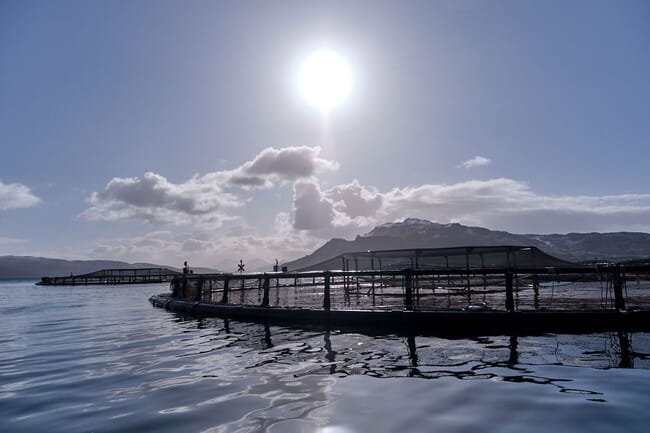
© Salmon Scotland
The improved survival rates, which increased despite adverse environmental conditions, comes after several mitigation measures were adopted by farmers to further boost animal welfare amid the climate change challenge, including oxygenation of the water, less time spent in the sea, improved monitoring and new feeding strategies.
“September is usually one of the most challenging months for survival, but interim figures suggest that monthly survival in September is expected to be above 96.5 percent, compared to 95.3 percent in the same month last year,” said Dr Iain Berrill, head of technical at Salmon Scotland.
“However, while there is always a level of fallen stock in any farming operation, the numbers this year are not where any farmer would want them to be. It is utterly devastating to the farmers caring for those animals when any fish are lost,” he added.
September survival rates typically drop to their lowest monthly level because this is when seawater temperatures peak – and this year has seen record temperatures, partly due to the El Niño weather warming phenomenon.
Whilst the higher seawater temperatures seen in Scotland are not an issue for salmon directly, as they are within their natural range, increases in temperature can contribute to an increase in naturally occurring organisms which can reduce oxygen levels and also compromise the health of the salmon in areas such as the west coast of Scotland.
Jellyfish and algal blooms have been exacerbated this year as a result of the higher than average temperatures, similar to the changing weather conditions experienced this year. However, these blooms are not expected to last, as seawater temperatures are expected to return to average in 2024.
Commenting on the mitigation strategies employed by the salmon industry, Berrill said: “Our ability to address the environmental challenges facing our fish while they spend up to two years in the sea has improved, but there is always more we can do to further improve survival.”
“Like all food-producing sectors, we must adapt to climate change and the aquaculture sector will continue to lead the world in healthy, sustainable salmon for decades to come,” Berrill concluded.




